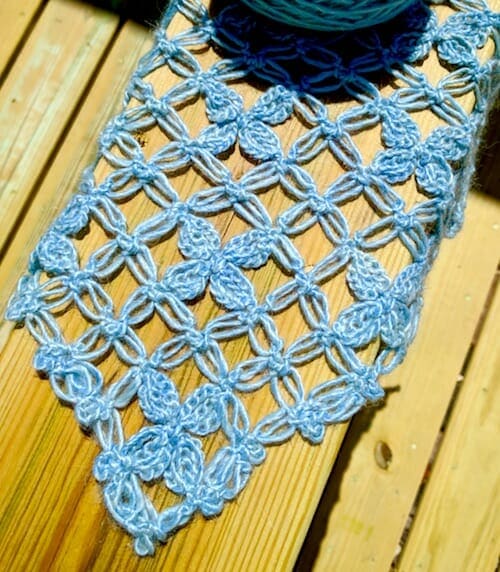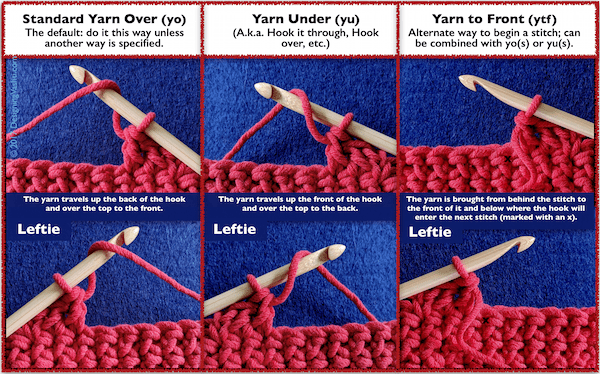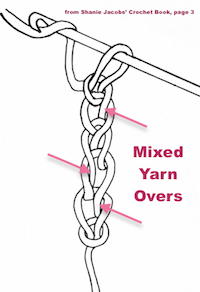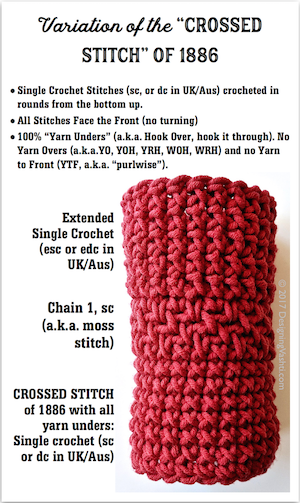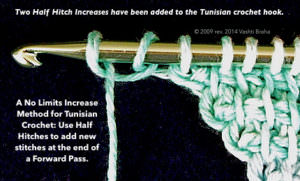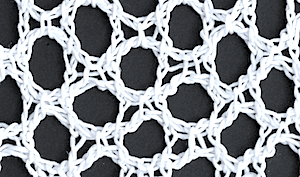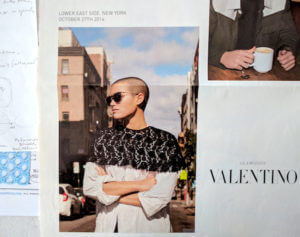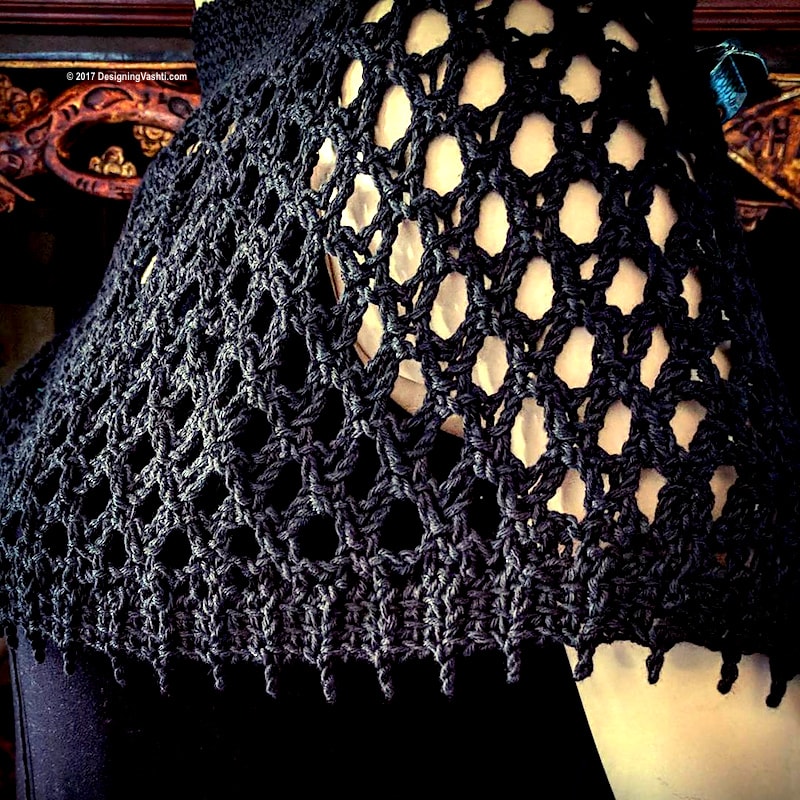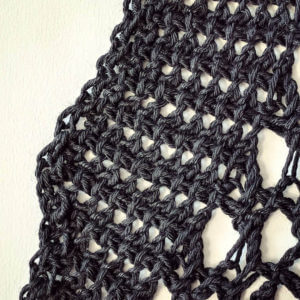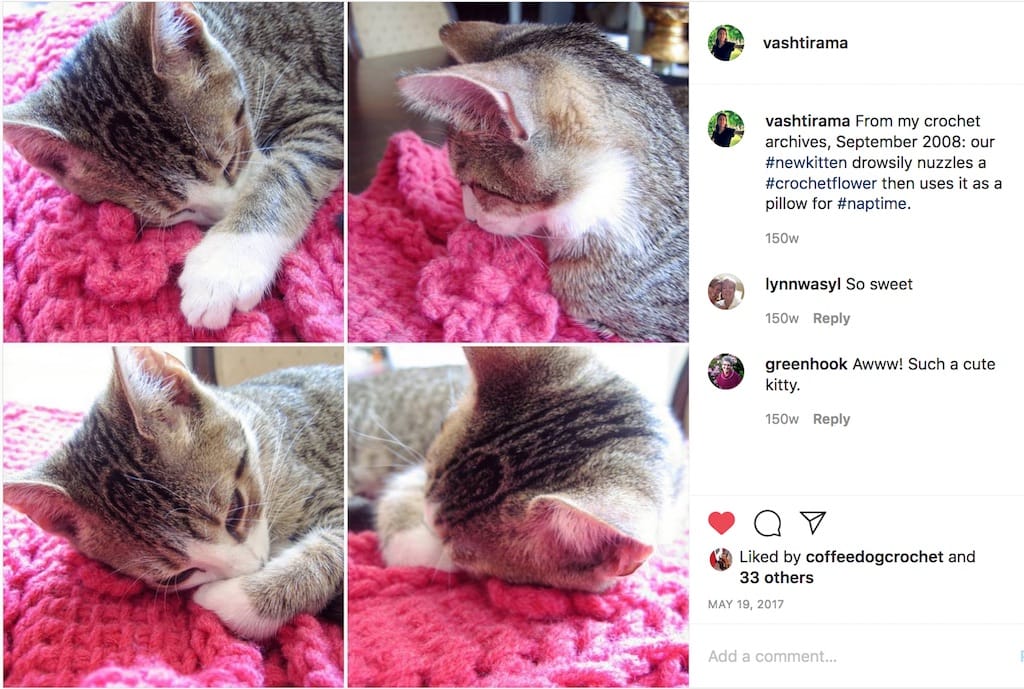
The class material for Creative Planned Color Pooling changed me. In fact, it’s still changing me. I’ve adjusted its title to take new developments into account (more on that below).
I’d love to have taken a color pooling class like this years ago! In fact I’d rather learn it in a class than from a pattern or blog. The next time I teach this class: July 28, 2018 in Portland, Oregon.
Crochet Rules, Questioned
Developing this topic changed me as a crocheter. It showed me what I take for granted about crochet how crochet works. I think it’s because for the first time, something else (the yarn’s color sequence) replaces crochet standards that have always worked for other kinds of crochet.

Here’s one: uniformly even stitches are beautiful. We aim to make uniform stitches to get a lovely, polished result, right? Beginners practice until they can be proud of how even their stitches are. Why would one question this?
When you’re intentionally pooling (I think of it as color directing), it’s the yarn’s colors that you aim to make uniform. The evenness of your stitches is second to that. A pretty distant second, which was shocking to me. Why? That brings me to a second way this class material changed me.
Primal Effect
On a bigger and more personal scale, my relationship to color changed! It was like watching my brain re-prioritize what it was seeing. My eyes rejoiced when the yarn’s next color stacked up the way I wanted it to. The stitches for making this happen became almost interchangeable. Even the stitch gauge could vary.
In other words, detecting a color pattern is riveting to the brain. (At least my brain. It feels primal.)
Especially when the pretty color pattern emerges from seemingly random chaos.
Especially when it’s like there’s a secret code in a multicolored ball of yarn and you’ve just cracked it.
The crochet stitch and gauge becomes a strategy: change the crocheting a bit to get a color to stick with the pattern and it works! The eye doesn’t see certain stitch irregularities. It’s too captivated by the color patterning. Also, the nearby stitches will adjust.
Recent Developments
Since my 2016 class, more crocheters have mostly been finding out from blogs about doing planned color pooling (a.k.a. intentional yarn pooling) with variegated craft store yarns. I’m seeing people make a cool argyle effect using the linen stitch (a.k.a. seed stitch, moss stitch, granite stitch): each row is [sc, ch 1, skip next st], and you crochet the sc of the next row into the ch-1 space of the completed row.
See this stitch in the colorful Aquarienne edging, Peaches handbag opening & handle, and Quailfeather. Accidental argyling happened with Barista. From a distance you can see a soft (but intentional!) argyle in this tweedy swatch and an argyle effect getting going in this swatch.
 I came to this topic a completely different way, via hand dyed yarns. It’s easy to identify the dye techniques, such as hand painting and dip dyeing, because these yarns tend to be sold in the hank the dyer used, not wound into balls.
I came to this topic a completely different way, via hand dyed yarns. It’s easy to identify the dye techniques, such as hand painting and dip dyeing, because these yarns tend to be sold in the hank the dyer used, not wound into balls.
In these dyed hanks I saw “stitch games” because I’d already done other color-based and geeky experiments. For example,
- When I learned from Marty Miller how hyperbolic crochet works (2006 or so), I crocheted her a hyperbolic coffee cozy secretly based on her birthdate.
- A hand dyed yarn with a vivid yellow in it made me want to set it off with love knots. “Love Games” was the result.
- I even sold a coffee cozy to a yarn company back in 2006 because I referred to it as a game.
Why “Creative Planned Color Pooling”?
Earlier versions of this class were “Stitch Games for Yarns With Short Color or Texture Changes” (2016 in Charleston SC) and “Stacked Color Pooling” (2017 in Mt. Pleasant IL). Planned pooling is becoming a recognizable term for more crocheters. I suspect that only seed stitch argyles come to mind for some. Also, some folks seem to think this is math based, but it doesn’t have to be. At all.
Creative is the important part of the new title because we’re still at the early stages of what is possible. There is way more to planned pooling than seed stitch argyles. What about lace and tall stitches? Shaping? Tunisian? I want crocheters to experience the possible! And of course to be changed by it.
